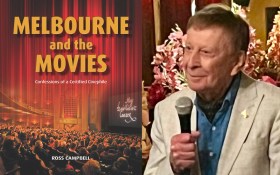Image CC: pexel.com
The arts sector is still in shock after the Australia Council’s announcement that 65 arts companies and organisations had been defunded of their multi-year operational funds on what is now described as “Black Friday”.
Read: 65 arts organisations lose funding from Australia Council
As the repercussions of that decision have become apparent across the arts sector, questions are being asked of the national peak body. Small to medium organisations were always in jeopardy in the Australia Council’s new drive for cross-platform innovation, but there seems to have been a total disregard for the consequences of stripping the ecosystem of a core component.
Simply, kill the feeders into this ecosystem and the ecosystem no longer exists.
Read: Australia Council giveth and taketh away
Don’t kill the feeders
This week NETS Australia – the national exhibition touring network – released a statement that revealed that over 100 exhibitions to regional audiences will be compromised by the recent organisational cuts.
Four of the organisations that comprise the NETS Australia network, servicing Western Australia, New South Wales, Queensland and Victoria – ART ON THE MOVE (WA), Museums & Galleries of NSW, Museums & Galleries Queensland and NETS Victoria – will no longer receive operational funding.
John Cheeseman, President of Regional and Public Galleries NSW (RPGNSW) and Director of Mosman Art Gallery, added: ‘For over twenty years NETS agencies have toured affordable and exciting contemporary visual arts to regional galleries.’
NETS Australia employs more than 650 artists annually, and over the last three years alone, its exhibitions were seen by 1.77 million people.
Michael Rolfe, Chair NETS Australia, added that the decision represents a significant cultural loss for the over half a million people that visit their shows each year.
Read: More than 100 touring exhibitions compromised by cuts
Furthermore, of the 128 organisations to receive funding the only regional gallery supported with direct funding was the multi-artform Campbelltown Arts Centre.
Regional galleries are among the most important and accessible cultural institutions in Australia and form a vital network, supporting artists and contemporary arts practices while nurturing audiences across the nation, added Rolfe.
The other tier of feeders hard hit were contemporary art organisations nationally.
Contemporary Art Centre South Australia (CACSA), Australian Experimental Art Foundation (AEAF), Canberra Contemporary Artspace, Northern Centre for Contemporary Art previously known as 24HR Art, Melbourne’s Centre for Contemporary Photography (CCP), Australian Centre of Photography (ACP) Sydney, the Australian Design Centre, were all struck off the list of four-year organisation funding.
Read: Enough! is the message from 38 visual art signatories
‘The sector wants recognition that this is an ecology that has an abundance of entrepreneurialism and punches well above its weight against every criteria, so why is there such scant regard for the sustainability and infrastructure that has taken decades to create?’ asked our source.
These organisations are platforms for innovation and sustained practice, are often cross-medium and embrace technology. The logic of the funding rhetorical, then, is out of sync with the reality of these decisions.
A point in case is the recent celebrated work by artist Vernon Ah Kee, Tall Man, purchased jointly by the TATE, the Museum of Contemporary Art (MCA) and QANTAS, was first shown in South Australia at a not-for-profit, was presented at Gertrude – a not-for-profit – and continued circulating around medium tier organisations before being purchased as a flagship Australian work by one of the most important contemporary art institutions in the world.
Read: Political works unite TATE, MCA and QANTAS
Similarly, Lisa Cahill, Director Australian Design Centre (ADC) pointed out that: ‘Two of ADC’s national touring exhibitions have wholly been acquired by state institutions. Menagerie, featuring the work of some 40 Indigenous artists, was acquired by the Australian Museum for its collection.
She continued: ‘A small, agile organisation, ADC often breaks new ground with its projects and provides platforms for artists and designers to show their work that the bigger institutions don’t have the program capacity to enable.’
This organisation – with a 50-year history – has provided a professional pathway for many people, and yet with a seeming stroke of the pen can be disregarded.
It is a story echoed across the seven defunded CAOs (Contemporary art organisations).
Steve Eland, Director Australian Experimental Art Foundation (AEAF), added to the conversaion: ‘Up until (recently), AEAF had received continued key organisations support from Federal Governments since 1974. AEAF is bewildered by this decision as the organisation had recently secured Arts South Australia Arts Organisations Program triennial funding and Visual Arts and Craft Strategy (VACS) four year funding.
The visual arts in South Australia received a king-hit as a result of both Australian Experimental Art Foundation (AEAF) and Contemporary Art Centre of South Australia (CACSA) not being funded, he added.
Eland, like many directors of small to media arts organisations, supported the Australia Council Senate Inquiry with a submission of support.
The sector feels betrayed. ‘I have lost faith in the Australia Council,’ said Eland flatly.
No longer chronological
A point that has been made in the wake of these decisions is that we are less reliant on chronology these days.
Ideas emerge at all stages in an artist’s career – senior artists end up going back to the more agile and experimental independent spaces to show work because they are testing ideas, which later might be picked up in other spaces. It is key to this conversation and that decision making process.
‘There is no single timeline – you don’t go from ARI (artist run initiative), to small, to medium, to commercial, to state gallery, to biennale, to rich – Artists come back into and through the ecology at all stages of their career. What is being done at the moment doesn’t reflect the reality of the way that the landscape works,’ reminded our source.
By removing these small to medium organisations from the ecology we are cutting our nation’s creative health off at the roots. The roll on affect diminishes our cities, diminishes tourism, and advocates for a less tolerant and open society – and that is a devolution that no nation wants.
Stripping the service industry
Another key element of the arts ecosystem is its service organisations. 4 out of the 5 have been defunded: NAVA (visual arts); AusDance (dance); Music Australia (music) and the Australian Society of Authors (literature).
Collectively, these service organisations have decades of experience, sector engagement and advocacy.
Only the newly created Theatre Network Australia and Ferral Arts were funded.
‘How is it that an organisation like NAVA, with three decade of committed advocacy on a national platform, is not funded?’ asked our source. ‘It is an intention to cripple the advocacy role of these organisations?’
These services organisation are being assessed against the same criteria as producer and presenter organisations, such as the major organisations (eg MCA, Biennale of Sydney, Art Gallery of SA, Carriageworks etc), with much greater resources at their disposal and so many other financing options.
This matter was raised by ArtsPeak with the Australia Council, who acknowledged it was an issue and addressed it in the six-year process. That, however, was lost when it was replaced with four-year funding program.
Back to square one.
Sustained investment oils the ecology
One only has to look back to the Myer Report (Report of Contemporary Visual Arts and Craft Inquiry, 2002) to see have the question – what creates substantial change – demyserfied. The Australia Council Inquiry reported that is was investment through time in the small to medium sector. What then changed in that thinking over the ensuing years?
The number of audiences, artists, and things produced as a consequence of that sustained investment far exceeds the dollar investment from government.
‘This desire to see more bang-for-the-buck, to cut ribbons and kiss babies, and the kind of pork barreling we have been witness too, seems to have replaced the longer term vision that has always sat core to the Australia Council and that was so pivotal in this inquiry into the sector.’
Read: Another Catalyst grant…and it smells like pork
Dead wood is deadening vision
The recent funding rounds have demonstrated that the new peer panel review system – brought into play in 2014 – is deeply flawed.
Couple that with mismatched language used by the Australia Council surrounding its “new” visionary position on international activities and collaboration, while stripping back support in those very areas, and it is no doubt that the sector is confused and shocked.
But there is another chink in AusCo’s armour that raises questions.
In conversations with the sector preparing this piece, the point was made that three member of the organisation’s Executive Team: Chief Executive Officer Tony Grybowski, Executive Director Arts Funding Frank Panucci and Arts Practice Director Visual Arts (previously Manager Arts Infrastructure) Laura McLeod, have collectively been at the Australia Council for over 40 years.
The idea of change and new approaches seem to have been made everywhere except where it was perhaps needed.





